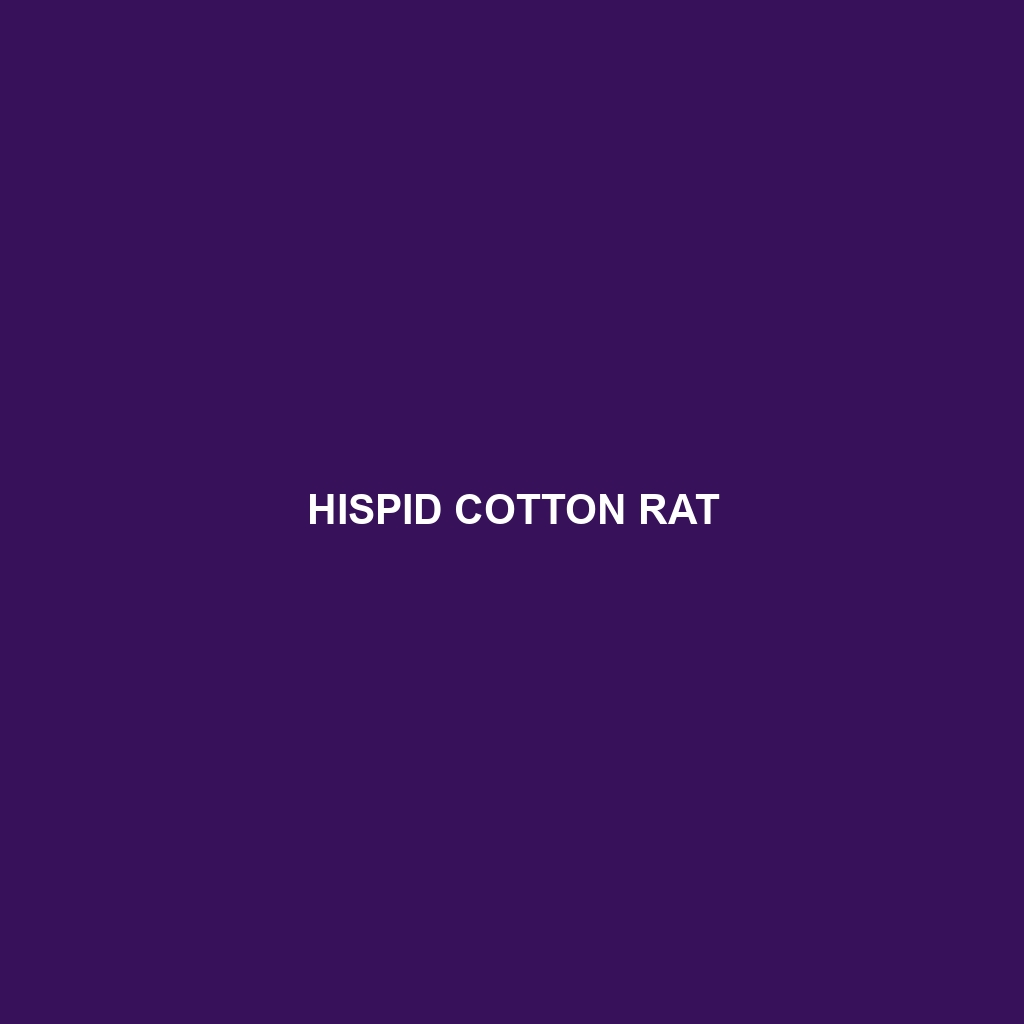Common Name: Hispid Cotton Rat
Scientific Name: Sigmodon hispidus
Habitat:
The Hispid Cotton Rat is primarily found in North America, particularly in the southeastern United States and parts of Central America. It thrives in wetland habitats, including marshes, swamps, and grasslands, as well as agricultural fields and areas with dense vegetation. This rodent species prefers environments that provide ample cover and abundant moisture, making it an integral part of its ecological niche.
Physical Characteristics:
The Hispid Cotton Rat is medium-sized, typically measuring between 22 to 27 centimeters in length, including a short tail. Its fur is coarse and shaggy, featuring dorsal coloration that ranges from brown to gray, enabling effective camouflage in its natural habitat. Notably, the Hispid Cotton Rat possesses a robust body, large ears, and a blunt snout, distinguishing it from similar rodent species.
Behavior:
This species is primarily nocturnal, exhibiting activity during the night when it forages for food. The Hispid Cotton Rat is known for its burrowing behavior, creating elaborate tunnel systems and nests to protect itself from predators. Additionally, it displays social behaviors, often living in small colonies, which may help improve foraging efficiency and enhance survival against threats.
Diet:
The Hispid Cotton Rat is primarily herbivorous, feeding on a variety of grasses, seeds, and fruits. Its diet is essential to its survival, as these food sources are typically abundant in the marshy and grassy habitats it occupies. The rat’s feeding habits can also have significant ecological implications, including seed dispersal and maintaining plant community dynamics.
Reproduction:
Reproduction in Hispid Cotton Rats occurs year-round, with peak breeding seasons typically in the spring and summer months. A female can produce multiple litters annually, with each litter containing 3 to 8 young. The offspring are born hairless and blind, relying heavily on parental care until they are weaned and able to venture out on their own, typically around 3 weeks of age.
Conservation Status:
The Hispid Cotton Rat is currently classified as least concern by the IUCN, indicating that it does not face immediate threats to its population. However, habitat destruction and changes in agricultural practices pose potential risks to its long-term survival, making ongoing monitoring essential for conservation efforts.
Interesting Facts:
One fascinating aspect of the Hispid Cotton Rat is its remarkable ability to adapt to altered habitats, even thriving in areas disturbed by human activity. This adaptability has allowed it to maintain a stable population in many regions. Additionally, the Hispid Cotton Rat plays a vital role in scientific research as a model organism for studying rodent ecology and behavior.
Role in Ecosystem:
The Hispid Cotton Rat is a crucial species in its ecosystem, serving as both prey and competitor. It plays a significant role in nutrient cycling through its feeding habits on plant material and contributes to the food web by providing a food source for various predators, including owls, foxes, and snakes. Its burrowing can also help aerate the soil, benefiting the vegetation in its habitat.
